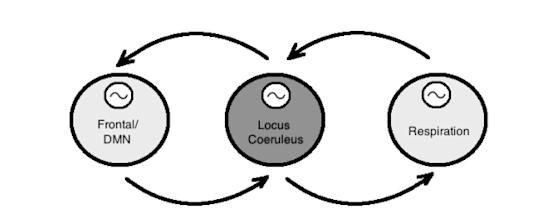Overview
The locus coeruleus (LC) is an area of the brain that plays an important role in our attention and respiration. The relationship between focus on the breath and the ability to regulate one’s attention – whether by redirecting or sustaining it on a particular object – has been explored in previous studies, but the specific, concrete neurobiological mechanism involved in the interaction between respiratory regulation and cognitive control has yet to be explored. This study hypothesizes that respiration and attention act as a coupled dynamical system, with the locus coeruleus serving as the third-party regulator. To explore this hypothesis, researchers gathered evidence through pupil dilation and blood oxygen level dependency (BOLD), which serve as known proxies for LC activity. Analysis of the data suggested that the LC is a critical node in facilitating coupling between respiration and attentional state, with an important note being that the coupling is bidirectional. What this means is that by focusing attention on our breath, we can slow down our breathing rate and in turn decrease the frequency with which our mind wanders.
Diagram showing hypothesized coupled information transfer between respiratory and attentional systems via the LC. Frontal attentional systems influence LC tonic/phasic activity. Oscillation of CO2 levels cause tonic fluctuations in LC at respiratory frequency. LC tonic activity in turn influences both attentional state and respiration. Note the bidirectionality of the coupling. Such coupled systems tend to evolve toward stable, nonlinear, or chaotic synchrony. Sine wave inside of circle indicates autonomously oscillating system.



